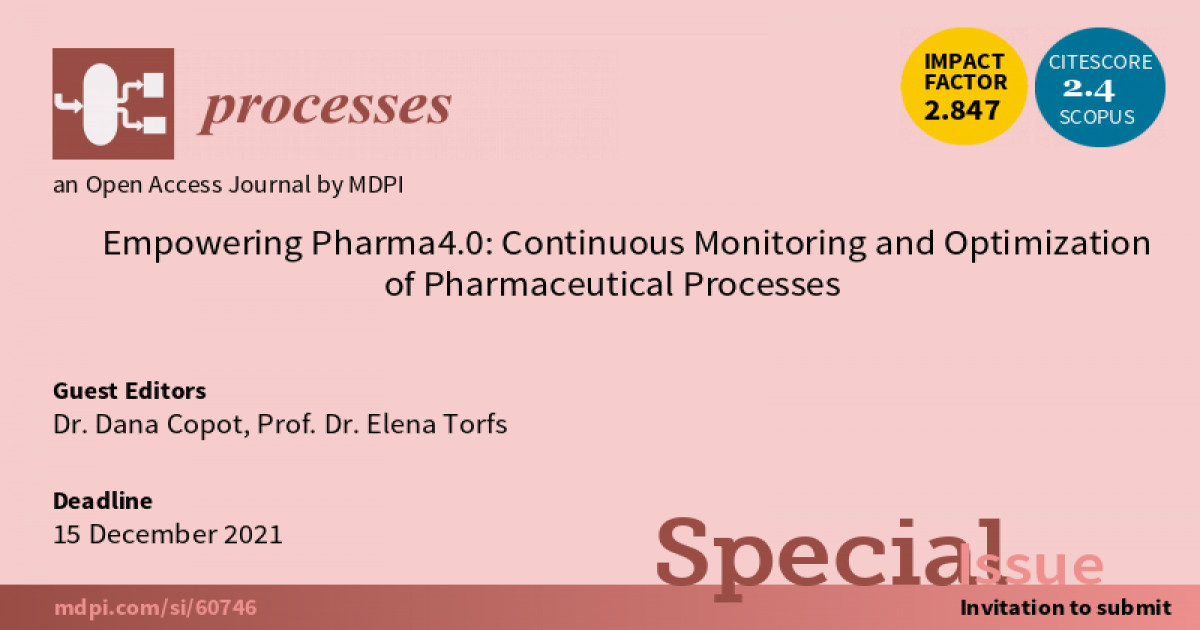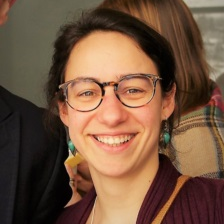Empowering Pharma4.0: Continuous Monitoring and Optimization of Pharmaceutical Processes
A special issue of Processes (ISSN 2227-9717). This special issue belongs to the section "Pharmaceutical Processes".
Deadline for manuscript submissions: closed (15 December 2021) | Viewed by 3845

Special Issue Editors
Interests: modelling and control; identification; anesthesia control; objective pain assessment; process control
Special Issues, Collections and Topics in MDPI journals
Interests: mathematical modelling; hybrid models; process control; potable water; water distribution networks; wastewater treatment
Special Issues, Collections and Topics in MDPI journals
Special Issue Information
Dear Colleagues,
Despite manufacturing innovations and the technologies on the rise, solid oral dosage in the pharmaceutical industry is still in mass production. Although this is efficient and cost-effective, it is typically based on a “one-size-fts-all” product concept and lacks the flexibility and agility required to fully meet the needs of the individual patient. At present, the pharmaceutical industry is experiencing a paradigm shift from batch to continuous manufacturing. This will lead to increased flexibility to target diverse populations as well as more consistent product quality to ensure best efficacy. Continuous processing integrated with online/inline monitoring tools coupled with an efficient automatic feedback control system is highly desired by the pharmaceutical industry. To facilitate the transition from the batch-wise production to continuous manufacturing in the pharma industry, engineering tools are needed. Hence, the aim of this paper is to enhance the advantages of modeling and control techniques in the field of pharmaceutical applications. Transition to a continuous manufacturing process in the pharma industry has only recently, in 2020, been shown to add great economic benefits and faster time to market for increased end-user availability of products.
Dr. Dana Copot
Prof. Dr. Elena Torfs
Guest Editors
Manuscript Submission Information
Manuscripts should be submitted online at www.mdpi.com by registering and logging in to this website. Once you are registered, click here to go to the submission form. Manuscripts can be submitted until the deadline. All submissions that pass pre-check are peer-reviewed. Accepted papers will be published continuously in the journal (as soon as accepted) and will be listed together on the special issue website. Research articles, review articles as well as short communications are invited. For planned papers, a title and short abstract (about 100 words) can be sent to the Editorial Office for announcement on this website.
Submitted manuscripts should not have been published previously, nor be under consideration for publication elsewhere (except conference proceedings papers). All manuscripts are thoroughly refereed through a single-blind peer-review process. A guide for authors and other relevant information for submission of manuscripts is available on the Instructions for Authors page. Processes is an international peer-reviewed open access monthly journal published by MDPI.
Please visit the Instructions for Authors page before submitting a manuscript. The Article Processing Charge (APC) for publication in this open access journal is 2400 CHF (Swiss Francs). Submitted papers should be well formatted and use good English. Authors may use MDPI's English editing service prior to publication or during author revisions.
Keywords
- continuous manufacturing
- process control
- advanced manufacturing
- personalized medicine
- pharma 4.0
- process analytical technology
- mathematical model
- dynamic simulation
- process simulations






